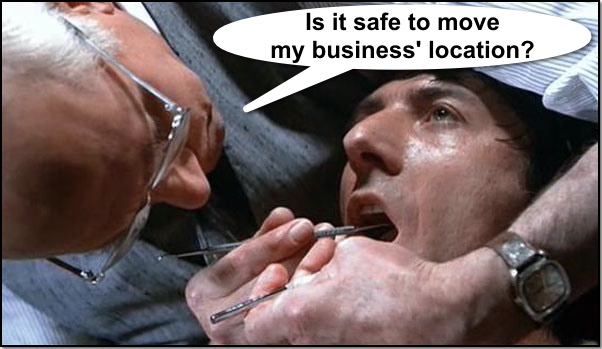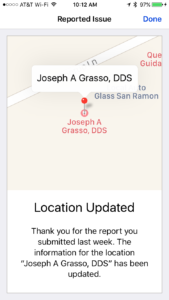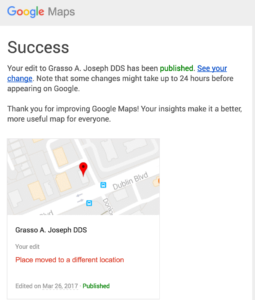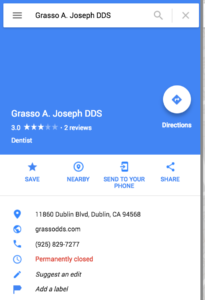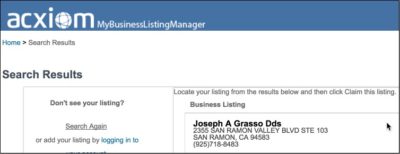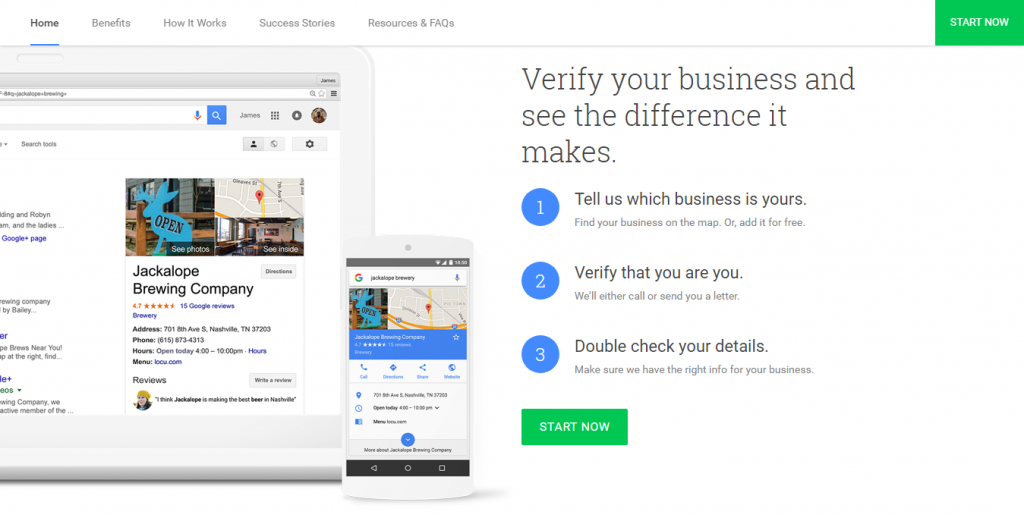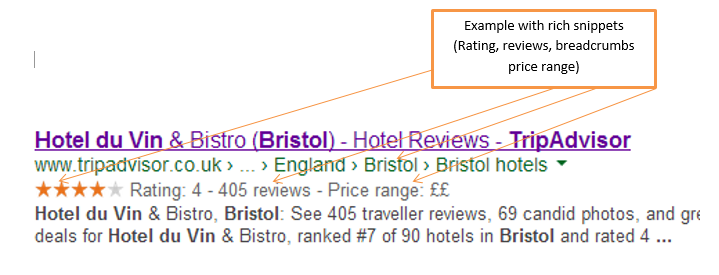
If your business has a physical address (e.g., a brick-and-mortar store), you need to consider investing your time and efforts in local SEO to earn new customers. Even small businesses shouldn’t be intimidated by their limited resources, because local SEO relies heavily on strategic planning.
By letting Google know where your business is located and what it has to offer, you not only will appear in the SERPs more often, but you will also show up in front of the eyes of your relevant audience.
Last week, Chris Countey, a Digital Marketer and Technical SEO Manager for Publicis Health Media, was our special guest on the chat. He and our other chat participants discussed local SEO strategies for small businesses.
Below you will find smart ways to improve your local SEO and boost your business:
Q1. In regards to local SEO, what are the most important elements on a website?
When it comes to local SEO, a website owner’s task is to convince search engine robots that their site is the most relevant for users in a certain location. To do this, you need to ensure that your website has all of the important elements that allow the robots to better understand your webpages and rank your site.
Let’s find out what these elements are:
-
NAP
In case you’re unsure, NAP stands for Name, Address, and Phone Number. It’s important to ensure NAP consistency, which means that you need to have your full NAP across your website and use the exact same details when you mention your address across the web. This is important because your local search rankings are influenced by whether or not Google can find your business information on the web, and whether that information is consistent and matches that which is provided on your site.
A1: NAP (name, address, phone number) with Schema. Use tech to be crystal clear to Google about where your business is #semrushchat
— Chris Countey (@chriscountey) April 19, 2017
-
Schema
You can add schema markups for NAP to provide search engines with what they need to display information about your business correctly. Schema allows search engines to gain more of an idea of the important information you are marking up, such as location and specific business-related snippets. With the help of these rich snippets, search engines can better understand your site content and show your local listings to more relevant local users.
A1: Schema has become very important. A site isn't optimized until NAP details are correct and markup is in place. #semrushchat
— Netvantage Marketing (@netvantage) April 19, 2017
-
Google My Business listings
Another essential element for local SEO is a Google My Business profile that enables you to appear in local search results for specific queries that are related to your product or service. To do this, you need to go to Google My Business and claim your GMB page, once Google sends you a verification code, you should enter that into GMB. This verification process may take 1-2 weeks, but it’s extremely important to your local SEO strategy. To learn more, you can check out this video on how to set up your GMB page.
Once you’ve verified your account, you should:
-
Choose the right categories for your business.
-
Provide a unique description.
-
Upload high-resolution images.
-
Add a local phone number and business address.
-
Add your days and hours of operation.
-
Encourage your customers to write reviews for your business.
A1) Consistent NAPs and postcode / Zip too across site, any listings and GMB to start #semrushchat
— Dawn A ໒( ⁰ _ʖ ⁰ )७ (@dawnieando) April 19, 2017
-
Optimized meta tags and page content for local keywords
When creating a title tag for your page, you should consider including your brand name, where you are based, or the area in which you operate. According to Nifty, 80% of top pages have their location in the title tag and 65% of top landing pages have their business name in the title tag. It’s also worth including a relevant keyword in the title of your page.
Another important step is to have a detailed meta description that is relevant to what your users are searching for. Consider including the brand name, the location or area of operation, and your targeted keywords.
As for your page’s content, it’s important to include your location within it, but you need to add it where it fits naturally:
A1: Avoid boilerplate content and page titles like [Page Name] – Best Lawn Care Dudes Cherry Hill, NJ #semrushchat
— Chris Countey (@chriscountey) April 19, 2017
-
Embedded maps
Embedding a Google Map on your website is not a difficult process and is a great addition to your website. By embedding a map of your actual address from Google Maps on your “Contact Us” page, you will help your users to find your business and make your company more visible and searchable on Google.
A1. Physical address & contact details. Embed a map on Contact page. Presence of local keywords. Schema markup. Geo tags. #semrushchat
— Sayan Sarkar (@SayanTheGeek) April 19, 2017
You can also check Google’s guidelines to learn how to properly represent your business on Google.

When planning your local SEO campaign, our special guest recommended paying attention to the details.
Q2. What can a local business with one location do to ensure it ranks across multiple target cities?
Local businesses with one location typically rank well for a local search across the area in which their office is physically located. However, these companies tend to face a common issue: they provide services within multiple cities. So, how can these businesses rank for other cities where they also offer their services?
Local PPC
For companies that don’t have a physical location in their target city, Chris Countey suggests considering a paid search approach. “Trying to game local SEO without a supporting address is going to cause headaches and won’t be the best use of your money,” tweeted Chris.
A2: To be honest, if your business doesn't have a physical location in a target city, maybe consider a paid search approach #semrushchat
— Chris Countey (@chriscountey) April 19, 2017
Google AdWords provides geo-targeting options that allow you to target your ads so that they only appear to users in a certain location or a specific set of locations. With this AdWords feature, you can ensure that you are not wasting your money trying to get clicks from people who are actually outside of your target area. A well-planned local PPC campaign can increase that chance that the users who are clicking on your ads are the ones who are able to receive your products or services.
A2: That being said:
Local search = showing up where you are
Paid ads = showing up where you are not. #semrushchat— RevLocal (@RevLocal) April 19, 2017
The importance of keywords
To rank for multiple locations and maximize your appearance in search, you need to use keywords that are related to your location, like the name of your city or your ZIP code. Don’t focus solely on things like the major metro area, instead, perform a thorough keyword research to find out which terms and phrases are applicable to your company and would be the most useful.
A2: Don't just include keywords focused on the major metro area. People are searching at a hyper-local level. #semrushchat
— RevLocal (@RevLocal) April 19, 2017
Local landing pages for each destination
You can also create local landing pages for each of your target destinations. This will help you optimize your content for each location and create more personalized content for your customers in the specified area. With this feature, you are able to target each Google My Business page to your landing page for each specific location.
A2 Use local landing pages (subburbs with proper local reviews) and service area in you GMB listing and schema has service area #semrushchat
— Arnout Hellemans (@hellemans) April 19, 2017
Your city and points of interest in a certain area
Modern consumers are looking for hyper localized content. Therefore, local businesses need to consider creating localized content that will interest people in a particular area. You can create content that focuses on local points of interest (e.g., destinations or landmarks) that users can see when viewing the area. This kind of content can help you to improve your geolocation targeting and become more visible to people who are looking around a certain location.
A2 Include directions from well known points of interest or landmarks on your site. #SEMRushChat
— Bill Slawski (@bill_slawski) April 19, 2017
You can also offer promotions specific to a certain area, cover relevant news, or mention specific local organizations to better connect with the community.
a2) That has become much more difficult due to local algorithm. Create content that addresses work in the various communities. #semrushchat
— Ryan Johnson (@rsj8000) April 19, 2017
Let’s sum up the following key points.

Hopefully, these tips can give you a good jumpstart on developing an effective campaign to rank across multiple locations.
Q3. How would a typical semantic hierarchy look on a local SEO campaign? How are keywords nested and how refined does it get?
One of the most talked about topics in local SEO is semantic markup, which is a code that is used in your website and contains metadata that describes individual pages on your site. Semantic markups help the search engines return more informative results for users.
According to Danny Sullivan, Google said that Hummingbird, its search algorithm, pays more attention to each word in a query to make sure that the whole query is taken into account. The goal is that the search engine can return more accurate results, i.e., pages that better match the meaning of the query. It means that the search engine will be focusing far beyond mere keyword matches and more on grasping the intent of the searcher. To do this, Google will have to rely on semantic markups to better understand both the meaning and the context of the queries.
Businesses now need to concentrate on providing content that is highly relevant to their target audience, using a set of keywords — not merely a single term for a single webpage.
A3. Determine the topic of the page and build locally relevant content using a KW set, not just a single KW for a single page #SEMrushchat
— Matthew Young (@MatthewAYoung) April 19, 2017
Semantic markups can clearly define your business and its location. A good place to start applying the markup is to your business address and contact information within your site. You can also include hours of operation, payment types accepted, and more.
Geographical modifiers, or geo tags, are location specific keywords which communicate local intent to search engines. When planning your local SEO campaign, you need to pay attention to these geo modifiers, such as places, names, and locations. Try to brainstorm keywords and phrases with the modifiers that your customers may use when searching for a business like yours.
A3: Do keyword research, pick KWs as u usually would (usually by search volume & relevancy) & add geo-specific modifiers #semrushchat
— Rachel Howe (@R8chel_Marie) April 19, 2017
The best type of content for your local business largely depends on the industry and your average consumer. However, you need to create specific content for each location that answers the questions that your customers may have. You can do this by using semantic markups for reviews, special offers, or events. For example, if your company is going to take part in some events or provide special services at particular dates or times, you can implement the Events Schema markup; for special offers, you can use Offer Schema.
A3: For each location, create content that answers questions. Where is parking? What's it famous for? Create a resource! #semrushchat
— Chris Countey (@chriscountey) April 19, 2017
Countey also mentioned which tools you can use when developing your campaign to find the most popular keyword variations: “With the rise of “near me” searches, the SEMrush Keyword Magic Tool can help you find the most popular variations.”

It’s important that website owners seriously consider semantics when it comes to user intent as well as structure their sites and HTML markups accordingly.
Q4. If your local business is an established company, what are some important things to consider when doing local SEO?
Local SEO can be hard to understand. However, if done right, it can be very beneficial. If you want to learn how to boost visibility for your local business in the search results, take a look at these four tips for local SEO success from our chat participants:
1. Encourage online user reviews
User reviews are a viable element for any local business’ success. Both positive and negative reviews help you to build your company’s visibility in search results, as well as your responses to them. “If you’re established, make use of your previous work — testimonials, reviews, check-ins, and get them on the go!” tweeted Traffic Jam Media @trafficjammedia.
You can also encourage your customers to leave reviews and ratings for your business, especially if they’re satisfied with its products or services. For example, you can send a short email after a service is provided or you can place a callout on your site. “In addition to sites like Yelp, encourage your customers to give you feedback on social media and travel websites,” recommended Chris Countey.
Make sure that you never post false reviews, by doing so you’re risking losing your earned visibility in search.
A4: Google loves reviews — not just Google reviews, but all of them. The more the better. #semrushchat
— Omi Sido (@OmiSido) April 19, 2017
2. Build local citations
According to Whitespark, local citations are mentions of a local business on the web, with or without a link. Google’s algorithm takes citations into account, because they show validity. The more evidence Google can find about your business, the more credibility the search engine gives to that information. You need to make sure that all data that is related to your business is consistent across the Internet.
A4. Ensure accurate citations, promote your brand, engage with your users on social, promote local events and involvement #semrushchat
— Corey (@CoreyW85) April 19, 2017
3. Set up location extensions in Google AdWords
Extend your Google AdWords campaigns by showing your ads with your business address, a phone number, or a map to your location. To do this, you need to use location extensions, which allow you to provide more information to local searchers, including a clickable phone number on mobile devices.
A4) Set up locations in adwords if using paid to see where the volume is coming from and what converts where & then use for SEO #semrushchat
— Dawn A ໒( ⁰ _ʖ ⁰ )७ (@dawnieando) April 19, 2017
4. Check out if competitors bid on your name
Have you ever come across the following situation? You type your brand’s name into Google and the top result or results are competitors who have used your company’s name in their ads.
If you answered yes, you’re not alone. This is quite a common issue, especially for brands who are established and well known. “If you’re well-known, even locally, competitors may bid on your name to piggyback off your success,” pointed out Chris Countey.
Unfortunately, Google doesn’t ban websites for such actions. This means that you need to take matters into your own hands. Countey recommends to keep track of these kinds of searches and create content that will combat your rivals by showing off your strengths that make your product or service the best choice.
A4: Monitor these searches and create content that combats them by touting the things that make your business the best choice. #semrushchat
— Chris Countey (@chriscountey) April 19, 2017
“Just because you’re “established” doesn’t mean you’re ever done with SEO! Always be striving to get reviews, links, etc.” tweeted ThinkSEM @ThinkSEM. Whether or not you are an established company, there is still a lot of work to do to ensure a new level of organic search traffic.

There are other things that can be done for your local SEO. Please feel free to share your experience and views on the topic in the comments below!
Q5. What is the best way to handle the listings for a local business with two physical places in the same city?
Nowadays, companies with multiple brick-and-mortar locations face the challenge of connecting with consumers online to encourage them to visit their physical business locations. If your company has two or more locations in a single city, you should have a listing for each of them. Make sure that whichever page you point searchers to on your site, that your content provides a unique experience to your users.
@ThinkSEM A5: A rule of thumb – If a customer could have a separate experience at a location, it's allowed to have it's own listings. #semrushchat
— Sarah Nelson (@Blogging_Geek) April 19, 2017
You need to have a separate, designated webpage for each of your locations. You can do this by creating a “Locations” tab in your header and listing out all your locations here. It’s worth referencing the neighborhood where each physical business is located in the page title.
A5: Create a different page on your website for each location.#semrushchat
— Omi Sido (@OmiSido) April 19, 2017
Consider creating a unique landing page for each of your physical locations. By doing this, the GMB listing for your first location will link to the landing page for your first location, while the GMB listing for your second location will link the landing page for your second location and so forth. Location landing pages provide you with an opportunity to target your content to a specific group of searchers.
A5: Separate conversional landing pages with unique content on both and make it keyword rich! #semrushchat
— SearchSwarm (@searchswarm) April 19, 2017
When it comes to content, if you want to optimize for each of your locations, you will have to post unique, locally-optimized content for each of them on a regular basis. “Whatever you do, don’t create a one-size-fits-all locations page template. Be strategic, not lazy,” tweeted Chris Countey.

If your business is a brick-and-mortar location, local SEO is a highly important part of your digital strategy. Local SEO is different from average SEO, and you must build your campaign accordingly.
We hope the tips from this post will help you ensure increased visibility in search engines and increased traffic to your website.
We would like to thank Chris Countey and our other chat guests for sharing great tips!
https://www.semrush.com/blog/local-seo-strategies-to-help-small-businesses-semrushchat/
On – 24 Apr, 2017 By Becky Shindell
source https://andlocal.org/local-seo-strategies-to-help-small-businesses-semrushchat/



